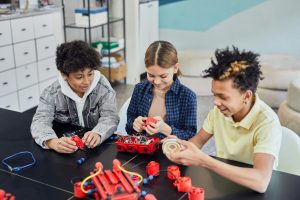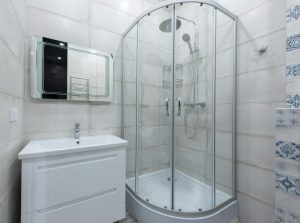Measuring Mastery: Assessment in Competency-Based Models
As education continue to evolve, the traditional methods of assessment are being challenged and replaced with more modern approaches. One of the most popular advancements is the implementation of competency-based models, which focus on measuring mastery rather than just knowledge acquisition. This shift in mindset has paved the way for new and innovative ways of assessing student learning. In this article, we will delve into the concept of measuring mastery and how it applies to competency-based models in education.
The Need for Measuring Mastery
For decades, education has been heavily focused on standardized testing to measure student achievement and progress. While this method has been widely used, it has also faced criticism for being overly competitive and not accurately reflecting a student’s true capabilities. As academic goals continue to shift to more practical and applicable skills, the need to accurately measure mastery has become even more crucial.
In traditional forms of assessment, students are evaluated on their ability to memorize and recall information, regardless of whether they understand the concept or can apply it in real-life situations. This can lead to students feeling disengaged and uninterested in their education, as they are not fully able to utilize their skills and knowledge. Competency-based models, on the other hand, focus on measuring a student’s ability to apply their knowledge and skills in real-world scenarios, providing a more accurate representation of their proficiency.
How Measuring Mastery Works in Competency-Based Models
Competency-based models are designed to assess a student’s mastery of specific skills or competencies rather than their overall performance. This approach allows for a much more personalized and targeted evaluation of a student’s abilities. Here’s how measuring mastery works in competency-based models:
1. Clearly Defined Competencies
In order to measure mastery, competencies must be clearly defined and understood by both students and educators. These competencies serve as the foundation for assessment and provide a roadmap for students to track their own progress. By clearly defining the desired outcomes, students are able to focus on developing and mastering specific skills, rather than just memorizing information.
2. Authentic Assessments
One of the key aspects of competency-based models is the use of authentic assessments to measure student learning. These can include performance tasks, projects, presentations, and other hands-on activities that allow students to demonstrate their mastery in real-life scenarios. Authentic assessments not only provide a more accurate representation of a student’s abilities, but they also promote critical thinking and problem-solving skills.
3. Multiple Pathways to Mastery
In traditional forms of assessment, there is often a one-size-fits-all approach, where students are expected to meet the same standards and deadlines. In competency-based models, there are multiple pathways to mastery, allowing students to work at their own pace and in a way that best suits their learning style. This recognizes the fact that every student is unique and learns differently, promoting a more inclusive and effective learning environment.
The Benefits of Measuring Mastery in Competency-Based Models
The shift towards measuring mastery in competency-based models has numerous benefits, including:
1. Fosters Self-Directed Learning
By focusing on mastery, competency-based models promote self-directed learning, where students are actively involved in their education and are responsible for their own progress. This helps to develop critical thinking, problem-solving, and time management skills, which are essential for success in the real world.
2. Better Preparation for the Future
In today’s ever-changing world, it is crucial for students to have the skills and knowledge required to adapt to new situations and challenges. Competency-based models provide a more accurate representation of a student’s abilities, ensuring they are better prepared for the workforce or higher education.
3. Increased Engagement and Motivation
Measuring mastery through authentic assessments promotes a more engaging and motivating learning experience for students. As they are able to apply their knowledge and skills in real-world scenarios, they are more likely to feel a sense of accomplishment and purpose in their education.
Conclusion
In today’s fast-paced world, it is essential for education to adapt and evolve to meet the changing needs of students. Measuring mastery through competency-based models challenges the traditional methods of assessment and provides a more accurate, personalized, and engaging approach to measuring student learning. As this approach continues to gain recognition and implementation, it is sure to pave the way for a more effective and inclusive education system.







